A HISTORY OF THORNCASTLE AND MERRION
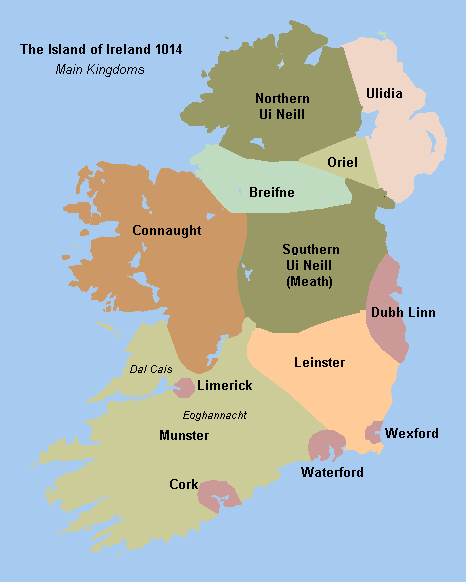
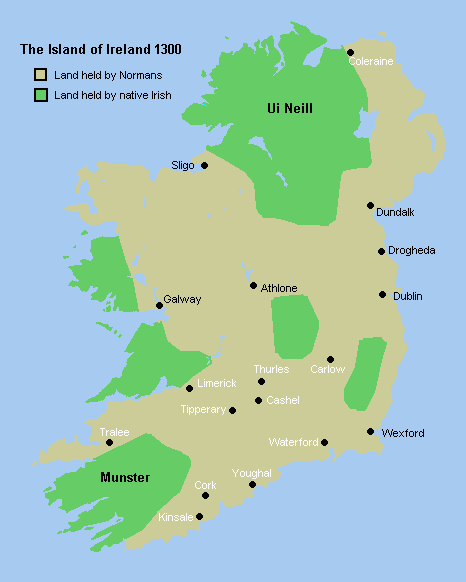
The Norman family of Fitzwilliams had been established in Ireland since 1210, and had acquired much land in Dublin and Meath. Walter de Ridelford, a brave and steadfast follower of Strongbow, was granted much of South County Dublin. He was known as the Lord of Bray and had a residence in Donnybrook. He gathered together a group of his tenantry and established a village which became known as Baile an Bothair, now Booterstown. The old road which came from Tara through Dublin turned from Donnybrook at a point near Ailesbury Road and reached the coast beside the old Merrion Graveyard. Booterstown was a portion of the Manor of Thorncastle which extended towards Mount Merrion and bore the name of Knock Ruadh, the Red Hill. Walter de Ridelford built a fortress near Blackrock which was encircled by a whitethorn hedge, hence the name Thorncastle. He also made a pathway from Booterstown to his home in Donnybrook. Christiona de Marisco, the grandaughter of Walter de Ridelford was the last of the family to hold these lands. Christiona never married and conveyed her property to the Crown having entered a convent.
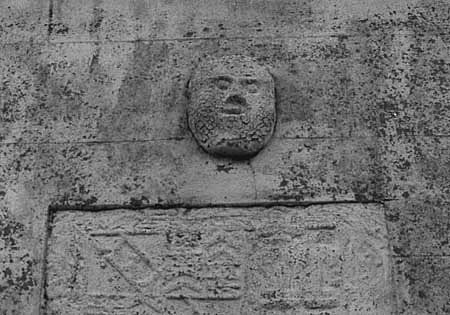
carving of Lord Fitzwilliam on the wall of The Home and School for the Blind, Merrion
The next noteworthy owner of Thorncastle was Sir John Cruise in the year 1366. In the Manor of Merrion he built a Castle on the site of the present Home for the Blind at Merrion. In 1389, John Cruise and William Fitzwilliam with others were appointed Guardians of the Peace in the County of Dublin but in 1391, this authority was vested solely in William Fitzwilliam and in the following year Cruise was disposessed of the Manors of Merrion and Thorncastle. When Cruise died the properties came into the possession of the Fitzwilliams and throughout the years the two families intermarried several times and thus were united. In 1348, William Fitzwilliam was pardoned by the King of all transgressions and murders he had or might have committed in the exercise of Martial Law upon the Irish who bordered on the Irish Pale. To restrain any incursions he built the Castle of Wicklow and was made Constable and appointed Chief Commander and Governor of that part of the country in 1375. It would seem from all the large estates owned by the Norman Lords that they had little difficulty in acquiring land, but it required constant vigilance to retain what they had. In order to protect their own lives, the lives of their servants and property, they built a large number of Castles, including Merrion Castle.
The Fitzwilliam Family
Two families have been associated with the land stretching south-east from Leinster House to Blackrock, Kilmacud and Dundrum from the Anglo-Norman invasion in 1169 to our own time. These are the Fitzwilliams and the Herberts (Earls of Pembroke and Montgomery). The Fitzwilliams are by far the older of the two families, having come to Ireland during the reign of King John (1199 -1216). The land in question had been granted to Walter de Rideleford by Strongbow shortly after the conquest but that family failed to leave its mark on Irish history. The Fitzwilliams prospered through the building of strong manors and castles (in Wicklow, Swords and Dundrum) and through intermarriage with other prominent Anglo-Norman families. They established control over south-east Dublin during the 13th. and I4th. centuries and other castles were built in Donnybrook, Baggotrath, Booterstown (Thomcastle) and at a later date, Merrion. They moved into Merrion Castle (the site of the present school for the blind) in the sixteenth century and, despite being damaged in war, it remained their centre of power for the next two hundred years. The family remained loyal to the Crown during the struggle with the English Parliament and in reward for their loyalty were granted the titles Baron Fitzwilliam of Thomcastle and Viscount Fitzwilliam of Meryon (Merrion) by King Charles.
It is remarkable that such a powerful family near the centre of Dublin should have remained loyal to the Catholic faith for almost two hundred years after the Act of Supremacy and the Reformation in England. Their loyalty to the Crown had not wavered however, and it was only after the defeat of the Stuart cause and the gradual imposition of penal laws against Catholics that they seem to have come under pressure to conform to the established order. The break was made by Richard, fifth Viscount Fitzwilliam, who wished to take his seat in the Irish House of Lords. Precluded from doing so by reason of his faith he joined the established (Anglican) church and took his seat as a peer of the realm in 1710.
The keystone over the entrance to the old barracks in Mount Merrion (known to us as "The Ballroom” during the 1940s) bears the date I7II. Happily, it has been preserved and is now set in the south wall of the Community Centre: It marks the year when the first buildings were erected in Mount Merrion. Finding that Merrion Castle had fallen into disrepair during the long years of Fitzwilliam residence in England, the fifth Viscount decided to build a new residence on the site of a small hunting lodge on Cnoc Rua/Owenstown Hill. His plans were far more grandiose than the few modest buildings erected over the next twenty years would lead one to believe. In effect only the two wings of the proposed manor were ever built. They are now occupied by the main hall of the community centre (the old catholic chapel, 1936-56) on one side and the scouts and guides hall on the other. Had the proposed mansion been built, facing the main entrance gates on the Stillorgan Road, it would have presented a spectacular sight. As it is, the modest Mount Merrion House comes as a disappointing anti-climax after the stately approach of Mount Merrion Avenue and the Main Gates entrance.
Nevertheless, Richard, the 5th. Viscount Fitzwilliam, has left his mark more than any other member of his family on Mount Merrion. He did not remain long in Ireland after the building of Mount Merrion house as he was elected M.P. for Fowey in Cornwall about 1726 (probably the same year that the house was built) and returned to England to take up permanent residence there. His eldest daughter, Mary, married Henry, the 9th. Earl of Pembroke, in 1733 and it was through this marriage that the Fitzwilliam Estate would pass to George Augustus Herbert, 11th Earl of Pembroke, in 1816. Thereafter the Herbert family would control events in Mount Merrion and the wider Pembroke Estate (and Township, I863-I930). Both names however, Fitzwilliam and Pembroke, are still household words to the people of south-east Dublin.
The first of the Fitzwilliams to own these lands was James, son of Hugh Fitzwilliam in or about 1420. They then passed to his son Philip. He was under age and James Cornwalsh, Chief Baron of the Irish Exchequer became his Guardian. Later Philip fought on the side of the White Rose, or Yorkshire party in the War of the Roses. He was described as one of Henry VFs Counsellors in 1446. On his death, the lands passed to his son, Stephen and later to Stephen's son James.
At the end of the Fifteenth Century, the lands passed to the Dundrum branch of the family, the head being Thomas Fitzwilliam. He was described as being rich, cultured and well educated. His eldest son, Richard succeeded him in 1518. Richard was a follower of Gerald, the ninth Earl of Kildare and the father of Silken Thomas. He died in 1528 and in his will he bequeathed money for a priest to pray for his soul daily, also a legacy to repair monastic buildings. To the Church of Merrion, he left a gown of satin and a velvet goblet. On his tomb in Whitefriar Street Church, he ordered that a great marble stone should be laid after the English custom. Thomas Fitzwilliam in accordance with the conditions under which he held the Manor of Merrion, contributed soldiers and supplies during the expeditions of 1556 against the Scottish Invaders and in 1560 to 1566 against Shane O'Neill. In 1559, he was returned to Parliament as one of the Knights of the Shire of County Dublin and became Vice-Treasurer of Ireland. Merrion Castle was now his principal residence. When he died in 1591 he was succeeded by his son, Richard. Richard re-built Dundrum Castle to fortify against attacks from the hill men. Richard's son, Thomas was made a peer by King Charles I and became Baron Fitzwilliam of Thorncastle and Viscount Fitzwilliam of Merrion. After, he became a Peer in 1629, he spent vast sums of money on the Royalist cause and his estate became heavily mortgaged.
During the rebellion of 1641, Merrion Castle was garrisoned by English soldiers. The building was attacked by rebels, forcing the garrison to flee by boat to Dublin, but in the end the Castle was destroyed. In 1645, Oliver, second son of Lord Fitzwilliam was created the Earl of Tyrconnell by King Charles II, fought in the French Wars and also served with the Royalist forces in Ireland. Merrion Castle was now re-built and, after repairs, was assessed as a house of sixteen hearths, which showed it to be one of the largest dwellings in County Dublin. The Family Crest of Arms was carved in stone on the second storey of the Castle. The Crest may still be seen in the stable yard of St. Mary's Home for the Blind. Oliver died in Merrion Castle and was buried in Donnybrook Graveyard in April 1667 where a black marble tomb inscribed with his full titles was set. His brother, William succeeded as Third Viscount Fitzwilliam and lived in the Castle of Simmonscourt where he died in 1675. Thomas, the Fourth Viscount Fitzwilliam of Merrion was Commander of a troop of horse soldiers. He displayed great courage at the Siege of Limerick and fought against the Williamite forces in Kerry. His name is mentioned in the Treaty of Limerick and he was one of twelve Catholic Peers who were allowed to retain their lands. In 1693, he entered Parliament to take his seat and was willing to take the Oath of Fealty, but refused to take the Oath of Abjuration of the Catholic Faith. This decision to forego his right to Parliament was not easily taken, particularly by a man of such wealth and station. Thomas Fitzwilliam died on the 20th of February in 1704.
FITZWILLIAMS MOVE TO MOUNT MERRION
In 1704, Richard Fitzwilliam succeeded as the Fifth Viscount Fitzwilliam of Merrion. He was a very ambitious man. He renounced the Catholic Religion and conformed to the established church in order to take his seat in the House of Lords in 1710. Merrion Castle was in such a very bad state of repair that Richard selected 300 acres of high scenic land, built Mount Merrion House and surrounded it with an eight foot high granite wall in 1711. His wife, Francis Shelley was the daughter of Sir John Shelley and a relation of the famous Poet, Percy Shelley. Richard was most diligent in Parliament and it was evident from references to him in connection with the rivalry which existed between him and his neighbours, the Allens of Stillorgan, that he was one of the most prominent of the Irish Peers in the politics of his day. Among his friends was the Archbishop of Dublin, William King. On more than one occasion, the Archbishop stayed in Mount Merrion House and enjoyed the peace and quiet which was necessary for his literary work.
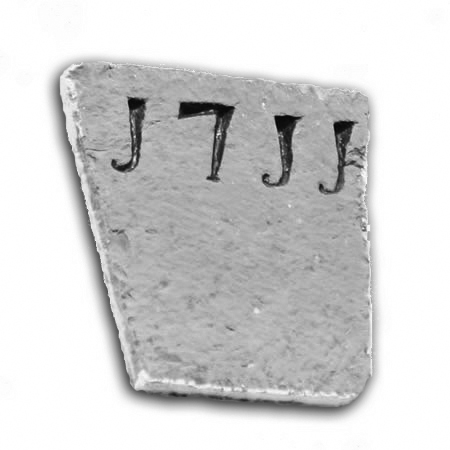
keystone, now embedded in the south wall of the Community Centre.
Richard's children spent their early life playing in the grounds of Mount Merrion. They were baptized in St. Andrews Church, Dublin, where there is still a large painting of them. The eldest son. Richard Junior, succeeded him. The second son, William seemed to be a man of great social charm and he spent his life in London and died at the close of the eighteenth century. The third son, John was a distinguished Officer, retained the rank of General and represented Windsor for some years in Parliament. In his Will, he left £100,000, a great part of which was bequeathed to his Servants. The fifth Viscount Richard, also had two daughters of whom, the elder, Mary married Henry, the Ninth Earl of Pembroke and Sixth Earl of Montgomery. This turned out to be of great significance for Mount Merrion. The younger daughter married George the Second Baron of Carberry.
In 1726, the Fifth Viscount Fitzwilliam as an Irish Peer succeeded in obtaining a seat in the English House of Commons as a member for Fowey in Cornwall and resided there permanently. In England he became one of the Entourage of the Prince of Wales and his family became favourites at Court. His son, John was appointed a Page of Honour and his eldest daughter, later to be the Countess of Pembroke, became Maid of Honour. A few years later, Lady Fitzwilliam who was a Roman Catholic, separated from her husband, and entered a Convent abroad where she remained for twenty years until after her husbands death in 1743. Lady Fitzwilliam lived until 1771 when she died at the ripe old age of 99 years.
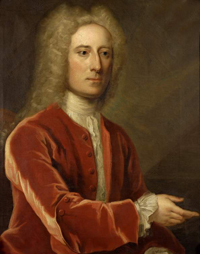
5th Viscount Fitzwilliam
© Fitzwilliam Museum, Cambridge
Soon after the Fifth Viscount Fitzwilliam had settled in England, Mount Merrion House was let to one of the Barons of the Irish Exchequer, the Honourable John Wainwright. He was an Englishman promoted in 1732, direct from the Bar in that country to become a Judge on the Irish Bench. In character, he was discreet, discerning, even tempered with a most charitable disposition. His friends included many people of note of the day, including Pelham Holles, the Duke of Newcastle, a school friend of his while at Westminister School. One of the letters written by Wainwright, while staying at Mount Merrion House is still preserved and was written to the Duke of Newcastle on the 17th of June 1736. He expressed great praise for Mount Merrion and said that the Bay of Naples, did not exceed that of Dublin Bay except in the sunshine. He also said that he could ride, walk, shoot, hunt or hawk inside the mile and a half circumference of the granite wall which was better than he had seen in England.
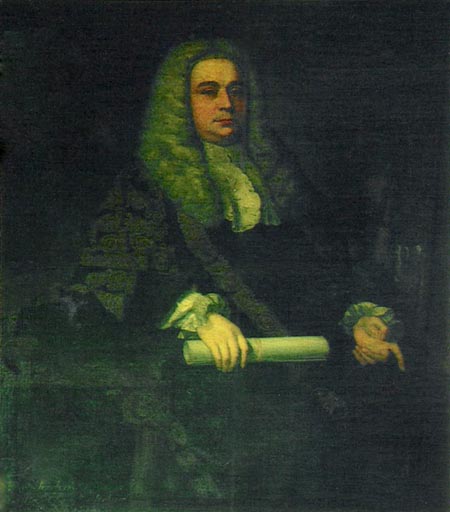
Lord Chancellor, Robert Jocelyn, by kind permission, The Earl of Roden
The Honourable John Wainwright, fell victim to the famine fever of 1741 while on the sprint circuit in the crowded courts of Munster. He was hurried up to Mount Merrion House but died there a few days later at the age of 52. His body was taken to Chester to be interred beside his father, in the Holy Trinity Church. Soon after Wainwright's death, Mount Merrion House was occupied by the Lord Chancellor, Robert Jocelyn who later was raised to the peerage as Baron Newport of Newport, County Tipperary where he had acquired considerable property. During the absence of the Lord Lieutenants, Jocelyn acted as one of the Lords Justices who were the real Rulers of Ireland while in office. To Mount Merrion, whenever official duties permitted, it was Jocelyn's delight to retire from his mansion in St. Stephens Green. At Mount Merrion on Sunday evenings, Jocelyn kept open house for his friends, calling it the Sunday Club. Chief amongst those received were Henry Singleton, Chief Justice of the Common Pleas and one of the principal Lawyers of his day, John Bowes, Chief Baron of the Exchequer who succeeded Jocelyn as Chancellor, Richard Mountney, a distinguished Scholar and Baron of the Exchequer, William York, one of the younger Judges and afterwards Lord Chancellor Hardwick, successor to Singleton. Besides these, Robert Downs, Bishop of Ferns and Leighlin was a constant guest and Lord Harrington, while Lord Lieutenant, on at least one occasion stayed at Mount Merrion.
It was Lord Chancellor Joceyln who sank a well and built a pump house in the woods to supply the old house with fresh water in 1740.
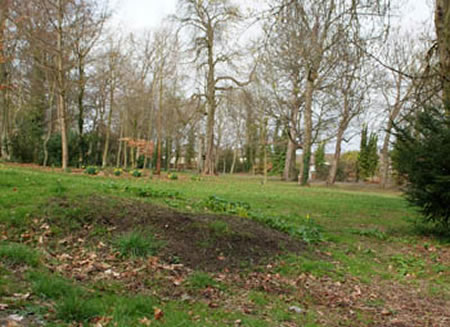
site of the ice house, later to become the pump house
East of the Shell House there was an Ice House which was used to keep the food from the house fresh. Later the Ice House seems to have been converted into a Pump House operated by a paraffin oil engine, connected to a well under ground.
The water was pumped up to a large tank situated near the present tennis court to supply the cattle grazing nearby.
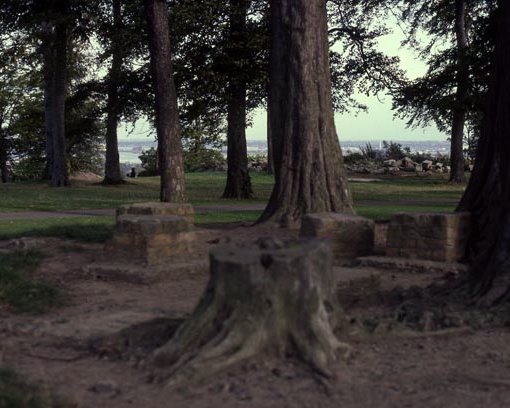
this photo shows the brick structure used to support the water tank in the Upper Deerpark. It was the primary source of fresh water to the lodge, relying on gravity to assist the flow. It also provide water for the cattle
THE WOODS AND THE DEERPARK
To the West of the house and stables lies a lawn and woods. In 1762 a survey map of the woods was commissioned and part of it was called the Scotch Grove. These were hand painted by Jonathan Barker. In the centre there was an Octogen Shell house which was supported by eight pillars of stone. From its centre extended thirty two vistas representing the points of a compass. These vistas commanded an extensive view of the sea, lowlands and mountains through rows of scotch pine or fir trees, some of which still remain.
This picture shows a fragment of one of the eight granite pillars used to support the roof of the Octagonal Summer House also known as the Shell House. This site is encircled by the remains of the Scots Pine trees which radiated out from the centre (see map below).
The habit of this tree facilitates clear visibility through its rows, as it produces foliage at the top.
This picture and the map below show the location of the Shell House...you'll find this if you walk from McGuires shop end of the park towards the tennis courts.
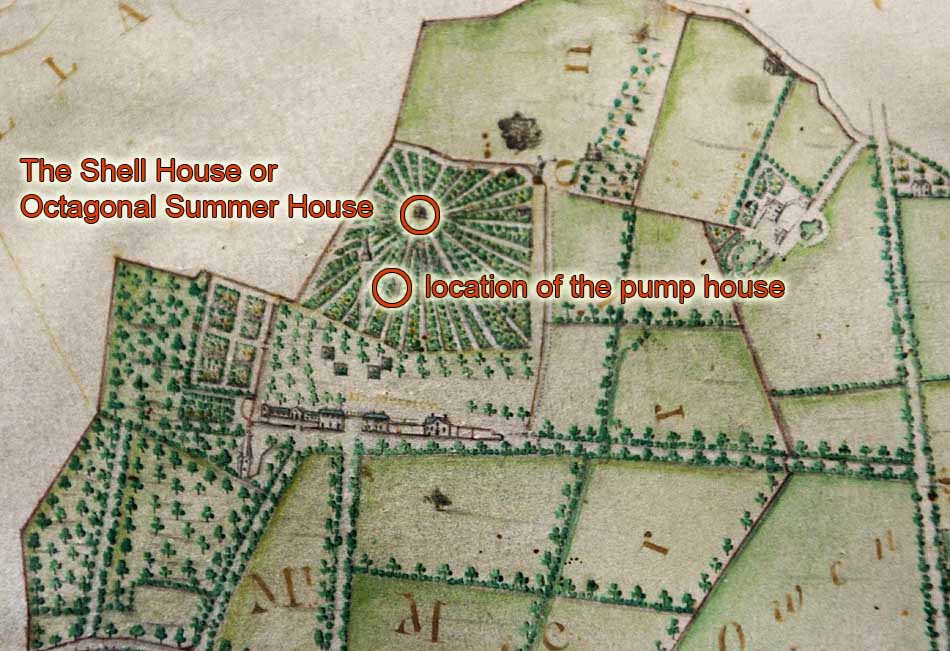
an aside: Mr Larkin, who worked for Mr. Kenny, the Builder, lived in the Livery Stables accommodation and maintained this pump. The insect life, including different types of butterflies, created a buzz in the woods on bright summer days and were recalled by Sir Nevile Wilkinson, who later lived in the old house, as getting louder and louder until he was almost scared by the volume of sound.
While living in Mount Merrion, Jocelyn's first wife, the sister-in-law of Bishop Goodwin died in 1748 and was interred in Irishtown Church. Later Jocelyn married the widow of the Earl of Rosse and continued to live in Mount Merrion. In 1754, he joined in the fund to repair the neighbouring church of Stillorgan and in July of the next year, he entertained in Mount Merrion the Lord Lieutenant, the Fourth Duke of Devonshire. A few months later he was raised to the dignity of a Viscountcy as Viscount Jocelyn. He only enjoyed this Honour for a short time as his gout complaint became acute and having gone to London for medical advice, died there in December of 1756 in his sixty-eighth year. He was buried in Sawbridgeworth Church in Hertfordshire, England.
Mount Merrion House was now once more in Fitzwilliam hands, the Fifth Viscount Fitzwilliam who had never returned to Ireland, had died in Surrey and had been succeeded by his eldest son, Richard the Sixth Viscount Fitzwilliam. He served in the Army under his brother-in-law, the Earl of Pembroke and during his father's lifetime had succeeded him in the office of Vice Admiral of Leinster. After his father's death, he was made Knight of the Bath and appointed a Privy Councillor. He married the daughter of a Dutch merchant, Sir Matthew Decker Bart who was best known as having feasted George I on a pineapple in his grand house in Richmond Green.
The Sixth Viscount Fitzwilliam was for many years returned as one of the Absentees from Ireland and it was not until the close of his life that he formed the intention of occupying Mount Merrion House once again. At this time the Sixth Viscount had been living in his father-in-law's house in Richmond. On his return to Mount Merrion he made alterations by building on to the front of the house which did little credit to the Irish workmen he employed. He also constructed the avenue to Mount Anville and also the present Deerpark. He died on the 25th of May 1776 and was interred in Donnybrook Chapel.
The next Fitzwilliam in line of succession was the most colourful of all. He was the eldest son, Richard Junior. He was born in 1745, admitted as a nobleman at Trinity Hall in 1761 and became Richard Viscount Fitzwilliam VII in 1776 at the age of thirty-one. While in Cambridge, Richard fell in love with a barmaid and proposed to lay his heart and fortunes at her feet. On hearing of this, his father decided to send Richard to the continent on a Grand Tour "to cool his ardour." After one year, Richard returned only to find his loved one married. This marriage was of course aided and assisted with financial help from his father. Young Richard swore he would never marry and he never did, however, he fathered three children with his opera singer mistress in Paris and they were well catered for in his will.
Richard in his will left £100,000 to his former Cambridge University to build a museum close at hand, hence the name, the Founders Museum of Cambridge. He also willed them 144 paintings among them a Titian, a Veronese and a Rembrandt, also a series of Rembrandt etchings. Some of the paintings from the Dutch and Flemish schools had been inherited from his maternal Grandfather, Sir Matthew Decker. Also included in his Will were 130 Medieval illuminated manuscripts and a collection of music autographs. The Founders Museum was begun in 1837, twenty-one years after his death, although the foundation stone had been laid in 1816. While the plans were drawn up by George Basevi, Richard's wonderful collection was housed in a school. In the Founders Museum can be seen, if requested, six oil paintings by William Ashford, first President of the Royal Hibernian Academy who was commissioned by Richard and lived in College Green for some time.
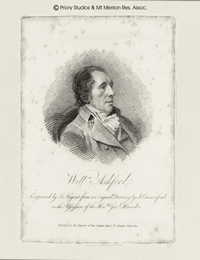
William Ashford RHA
© Fitzwilliam Museum, Cambridge
Richard encouraged William Ashford to build himself a new Villa in Sandymount and leased the land "at very moderate terms." William Ashford's friend James Gandon of the Dublin Custom House and Four Courts fame, designed the building which is called "Gandon Villa." Gandon also designed the Kings Inns and the College Street front to the Parliament House now the Bank of Ireland. Gandon retired in 1808 to Lucan where he died in 1823. Also in the Founders Museum there is a collection of drawings of Mount Merrion House and the Deerpark by William Ashford, bound in a book, bearing pencil titles in the handwriting of the Seventh Viscount. William Ashford died in 1824 and was buried in Donnybrook Graveyard beside the present Garda Barracks.
Attached to the Founders Museum is the only visible connection with Merrion Castle or Mount Merrion which is a refreshment room called "Merrion Restaurant." The Seventh Viscount seemed to be of an ecumenical disposition as it was he who expended £6,000 to build a Catholic Church in Booterstown in 1812. He instructed his architects to avoid any Church like appearance so as not to offend his non-Catholic tenants and friends. The Church is built on the site of an old Mass House. Although, he spent very little time in Ireland, he was most generous towards deserving charities. His Uncle William gave him the title of being "unfixed as mercury" and on one occasion he accomplished the journey from Richmond to Mount Merrion and back in fourteen days, a considerable feat in those times. During Richard's lifetime, Mount Merrion House was occupied by Mr. Richard Verschoyle and his wife, formerly Ms. Barbara Pagan who was agent to Lord Fitzwilliam, as was her mother before her. It was said that Mrs. Verschoyle used to sit under an obelisk which was still to be seen in the woods in Mount Merrion until 1960 and watched for her husband coming up the main avenue from the Stillorgan Road on horseback.
The next agent to occupy Mount Merrion House was Mr. Cornelius Sullivan and then Mr. Edward Vernon who was appointed as one of the original Commissioners under the Irish Land Acts. When the time came for Richard Viscount Fitzwilliam VII to select an heir to his vast houses and estates and as his two brothers were unlikely candidates he invited the Yorkshire Fitzwilliam and the eldest son of the Earl of Pembroke to tea. The Yorkshire Fitzwilliam poured his tea into a saucer and blew on it. The old Viscount immediately exclaimed "no-one who drinks his tea like a washer-woman shall be my heir." He bequeathed his estate to his cousin George Augustus the Eleventh Earl of Pembroke and Eight Earl of Montgomery, a descendant of Queen Caroline's maid of honour.
The Pembroke Estate
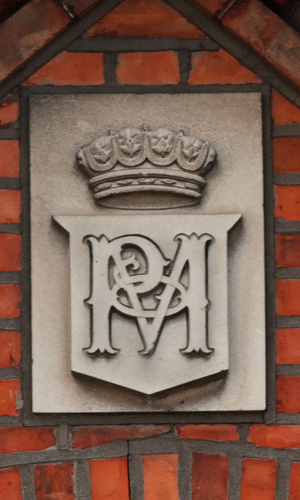
George Augustus Herbert, like the Fitzwilliams, was of old Anglo-Norman lineage. His chief seat was at Wilton near Salisbury on the Welsh marches. George Augustus, the eleventh Earl, spent all his life in England and left his Irish estate to his second son, Sydney, Lord Herbert of Lea: He was the first of the Pembrokes to come to Mount Merrion and his initials S.H. were worked into the wrought-iron gate which opened into its orchard. They were still in place when I was a small boy and tempted by the forbidden fruit inside.
The Eleventh Earl of Pembroke died on the 26th of October 1827 and was succeeded by his elder son, Robert Henry the Twelfth Earl of Pembroke. Robert Henry had little interest in his Irish estates. At 23 he contracted a marriage with a Sicilian pseudo Countess which turned out to be disastrous. He died and was buried in Palermo in Sicily in 1862.
Robert Henry was succeeded in the title by his nephew George Herbert, therefore his half-brother Sydney Herbert, Baron of Lea, although heir presumptive to the Pembroke Estates, never succeeded to the title of Earl of Pembroke.
The Right Honorable Sydney Herbert who lived from 1810 to 1861 was, we are told, handsome with thick dark chestnut wavy hair, dark eyes, long lashes, tall and broad shouldered. He also had wit, social talents, a brilliant brain and was a very good horseman. Even with all these talents he was not a happy man and sought consolation in religion. He belonged to an association whose members pledged to give away a large part of their incomes in private charity.
Although an absentee landlord, The Right Honorable Sydney Herbert obtained parliamentary powers which enabled him to grant leases and improve roads, dwellings and buildings on his Dublin estate. In 30 years the rent-roll doubled and he had many streets named after him. Herbert Street, Herbert Park, Sydney Parade, Lea Road, Pembroke Street etc. More of the history of Sydney Herbert belongs to England than Ireland. He was the secretary of war and later Chairman of the Royal Commission for India and best remembered as a great friend of Florence Nightingale whom he met while honeymooning in 1847 with his new bride Elizabeth Acourt. Florence Nightingale however had no time for diplomacy. She wrote to the War Office during the Crimea War blaming Sydney Herbert for allowing Mary Stanley to take 46 nurses away without previous advice from her. Herbert worked hard to try to please everybody but his concern with the dreadful nursing service at Scutaria contributed in no small measure to his early death in 1861.
When George Herbert died, his widow, left the then huge sum of £30,000 to both Baggot Street Hospital and to The National Maternity Hospital in Holles Street, where the plaque is still on display.
Next to succeed to Sydney Herbert's title was his son George Robert Charles Herbert who became the second Baron of Lea and a year later Thirteenth Earl of Pembroke.
At first it looked as if he was going to follow in his fathers footsteps as Disraeli appointed him Under-Secretary for War. He was forced to resign this position as his health was poor and he spent a great deal of time travelling. On one occasion his medical advisor, a Dr. Kingsley and himself were shipwrecked and they recall their experiences in a book called "South Sea Bubbles." It was the Thirteenth Earl who endowed the Pembroke Technical School. He died in 1895 and was succeeded by his brother Sydney the Fourteenth Earl of Pembroke. Sydney married Beatrix Louise, eldest daughter of George Frederick D'Arcy (Lambton), Second Earl of Durham on the 29th of August 1877.
On one very happy occasion, Lord Pembroke then Lord Steward and his eldest daughter Lady Beatrix were on a trip to Delhi on a steamship christened "China." Good fortune arranged that a young soldier Nevile Wilkinson who had met him at a cricket match in Wilton House in Wiltshire was instructed to occupy a vacant seat next to his daughter. A short while later on the 16th of February 1903, Lord Pembroke wrote to his Irish agent Fane Vernon saying "he had returned from India safe and sound with nothing lost except Lady Beatrix's heart to Captain Wilkinson of the Coldstream Guards. Lord Pembroke said he was a very nice fellow and Lady Pembroke and himself were delighted with the engagement and the marriage would be scheduled for April.
Captain Wilkinson was born on the 26th of October 1869 in Highgate, London and educated at Harrow and the Royal Military College where he joined the Coldstream Guards in 1890. He served in India and Africa and later in World War I. He also officiated at the Coronation of both George V and VI of England. Later he became Ulster King of Arms and Registrar of the Order of St. Patrick. In the early 1900's he attended the Royal College of Art, South Kensington, London which was to be of great benefit to him later on.
On the 25th of February 1903 Lord Pembroke wrote to Fane Vernon saying that Captain Wilkinson's battalion may be sent to County Dublin that summer in which case he might be able to give him a lodging at Mount Merrion if the present tenants agreed to vacate. On the 4th of March 1903 Lord Pembroke wrote to Vernon telling him that they had taken 46 Upper Grosvenor Street, London for the season from the 14th of April. Lord Pembroke wrote to say he was not sure of the likelihood of Captain Wilkinson's regiment going to Ireland but was quite willing to sub-let the house if necessary. On the 9th of April 1903, the tenant was requested to vacate Mount Merrion House for three months and he would be refunded one quarter rent in order that Lord Pembroke could have the house at his disposal and be able to pay an occasional visit.
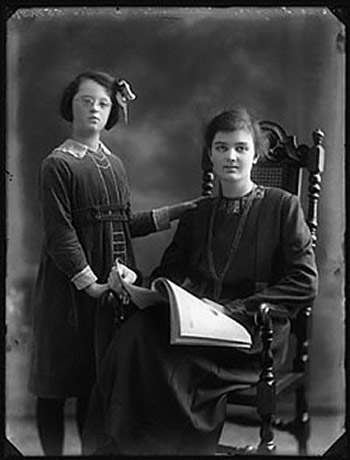
Phyllis and Guendolen Wilkinson
(courtesy The National Portrait Gallery, London)
In1903 Lady Beatrix Francis Gertrude married Sir Nevile Rodwell Wilkinson. They had two children, Phyllis and Guendolen and lived in Mount Merrion House from 1903 until the beginning of the first World War. Sir Nevile described Mount Merrion House as an old Georgian house whose wide windows looked over the bay of Howth. To the north could be seen the low line of the Mourne Mountains, sixty miles away, when the rain had washed the air clear. To the south and south-west the horizon was bounded by the swelling outline of the Wicklow and Dublin mountains.
A double line of beech trees shaded the avenue which ran to the entrance gates on the Stillorgan Road. The avenue with a pebble surface was raked daily and a broad border tended carefully by a Scottish gardener who related with fury how a distinguished citizen of Dublin having ridden to pay his respects to his Lordship had on departing, cantered gaily down the sacred border, turf flying from his horses hooves so the whole length was scarred and pitted with hoof marks. It was only after months of patient labour that the fine surface was restored to its former glory.
This story of Mount Merrion has new reached the dawn of the twentieth century. It was in 1900 that Queen Victoria, on her last visit to Ireland, paid her second visit to Mount Anville and enjoyed the panoramic view over Dublin Bay. The Vernon family, agents to the Pembroke Estate, were the tenants in Mount Merrion. In 1903 however, Beatrix, daughter of the Earl of Pembroke, married Neville Wilkinson, a young officer in the British Army. They made their home in Mount Merrion and remained there until the outbreak of the First World War. Their two daughters were born there and once again the magic of Mount Merrion cast its spell on the family. Titania's Palace is the embodiment of that spell and it may be that with its removal from Ireland the magic has been lost forever.
Sir Thomas and Lady Power outside The Lodge, with their relations Mr. and Mrs. O' Reilly.
The chauffeur is sitting beside Sir Thomas. They were on their way to a big exhibition in Cork, which took two days driving; when they arrived they sent a telegram to say that they had arrived safely!
"Things Fall Apart", the title of a novel by the Nigerian writer, Chinua Achebe, may be an apt description of the disruption which took place in Ireland in the years after the First World War. The establishment of the Irish Free State in 1922 marked the end of the established order of British rule and a Protestant Ascendancy. The change was gradual for the latter as many Protestants had been prominent in the cultural reawakening which preceded the armed struggle, and the War of Independence had been directed at institutions of British rule. Nevertheless a basic change took place in the structures of Irish society during these years as a new national identity was forged, and the Mount Merrion I grew up in during the 1940s was vastly different from that known by Phyllis and Guendolen Wilkinson thirty years earlier.
Demesne wall at Cherrygarth
Demesne wall at exit to Deerpark Road
Demesne wall at Mount Anville exit
Demesne wall at the car park on Redesdale Road
Demesne wall on the Lower Kilmacud Road
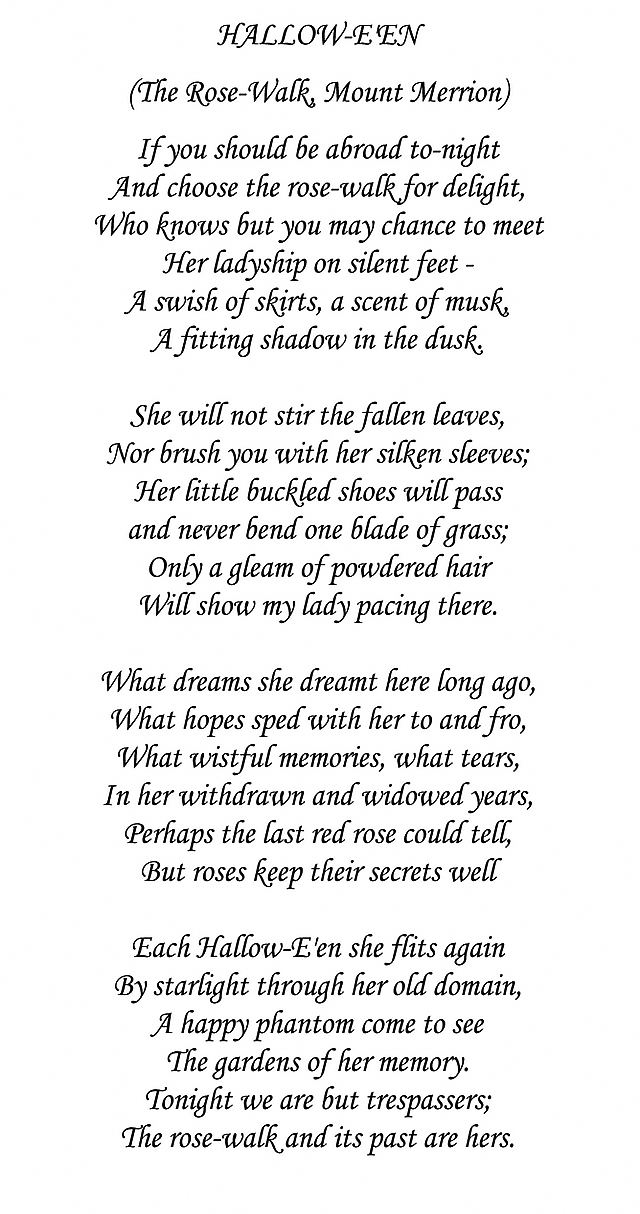
The Rose Walk contributed by Paddy Larkin
